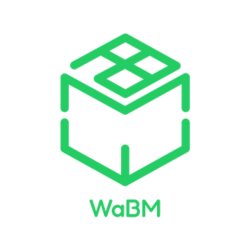What is a Markup Fee?
Here’s a universal truth: no one likes paying more for something that should cost less. Yet, when it comes to services like the WhatsApp Business API, many businesses are unknowingly doing just that.
You sign up, thinking you are paying for just the service, but buried in your vendor’s pricing is something extra: a markup fee. This is the additional percentage a vendor adds on top of the actual WhatsApp API charges. And while some level of markup fee is expected for service and support, these fees are often not clearly disclosed, leaving you unsure of what you are actually paying for.
It’s not just about paying more, it’s about not knowing why you’re paying more.


Why Is It a Problem?
A small percentage here and there might not seem like a big deal. But when you are sending thousands of messages a month, those tiny markups quickly snowball into significant costs. What starts as a minor extra, ends up quietly eating into your margins.
This hits harder for businesses operating at scale. If your entire customer engagement strategy relies on WhatsApp, you’re more exposed and more likely to be overpaying without realising it.
And the real issue? Lack of transparency. If you don’t know what part of the cost is actual API pricing and what part is vendor-added markup, how can you plan your finances properly? Or trust the partner you’re working with?
It’s not just about the money. It’s about control, clarity, and knowing where your business stands.
What Transparent Pricing Should Look Like?
When you sign up for WhatsApp Business API through a vendor, you might assume the price you see is the only cost involved. But the truth is, the total amount you pay usually has two parts: the base price charged by WhatsApp itself, and an extra service fee added by your vendor. This service fee is where markup fees often sneak in, making your bill higher than expected.
Let’s break it down simply:
- Base Price: This is the official WhatsApp API charge, what WhatsApp bills vendors for every message sent or conversation started.
- Service Fee: This is what your vendor adds on top for managing your account, providing support, building dashboards and other value-added services

Now, here are some key points to keep in mind about markup fees on WhatsApp API pricing:
We’ve seen too many businesses unknowingly overpay for WhatsApp API access, mostly because vendors bury hidden charges under vague pricing structures. That’s exactly what WaBM was built to change.
At WaBM, we believe pricing should be clear, fair, and upfront.
Here’s what sets us apart:
1. No Markup Fees on WhatsApp Business API
WaBM users pay Meta directly for the WhatsApp Business API, no middle layer, no inflated charges. You even receive the official bill from Meta itself. That means zero markup, complete transparency, and full control over what you’re actually paying for.
2. Real-Time Billing & Fully Transparent Invoices
What you see is what you pay. Our real-time billing dashboard shows every charge in detail, so you’re never left wondering where your money went.
3. No Price Hike, Even After Meta’s Changes
When Meta recently revised its message pricing, many vendors used it as an opportunity to quietly increase their own rates. We didn’t. WaBM kept pricing steady for our users, because staying fair doesn’t need an excuse.
At WaBM, we believe if you’re already paying Meta, you shouldn’t be paying more just to get access to it.
What Can You Do To Avoid Markup Fee?
1. Audit Your Current Vendor Charges
Start by going through your invoices. Compare them against Meta’s official WhatsApp Business API rates. If there’s a mismatch, it’s time to ask questions.
2. Ask Direct Questions
Don’t hesitate to ask your vendor: What’s the actual WhatsApp API cost? What are your additional fees? Transparency is a right, not a luxury.
3. Compare Platforms, Not Just Features
It’s easy to be impressed by shiny dashboards, but dig deeper. Choose platforms that are open about pricing and prioritize long-term value, not hidden fees.
4. Look for Real-Time Billing
Platforms like WaBM provide real-time, line-item billing so you always know what you’re paying for, when and why. This avoids surprises and helps with budget planning.
5. Choose Partners Who Scale With You, Not Charge You More For It
As your business grows, your costs shouldn’t inflate unfairly. Pick vendors who commit to transparent, fair pricing no matter your size or usage.
Conclusion
If you’re using the WhatsApp Business API to power your customer engagement, you shouldn’t have to play detective with your bills. Markup fees, especially the hidden ones, eat into your ROI and leave you second-guessing your vendor’s intentions.
At WaBM, we believe in putting businesses back in control with transparent pricing, real-time billing and no markup on what Meta already charges. Because when you know exactly what you’re paying for, you make better decisions, grow with confidence, and actually get the value you signed up for.
It’s time to stop overpaying and start expecting better.
Fair pricing isn’t a feature. It’s the bare minimum.
